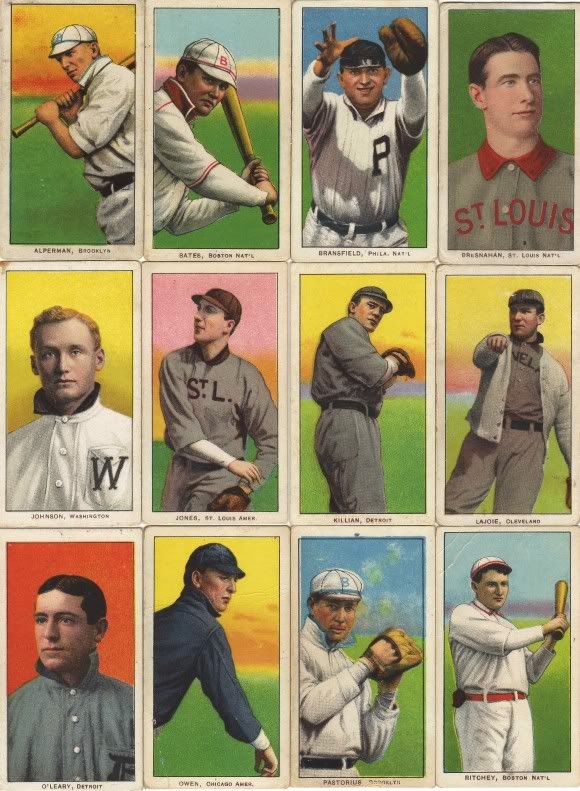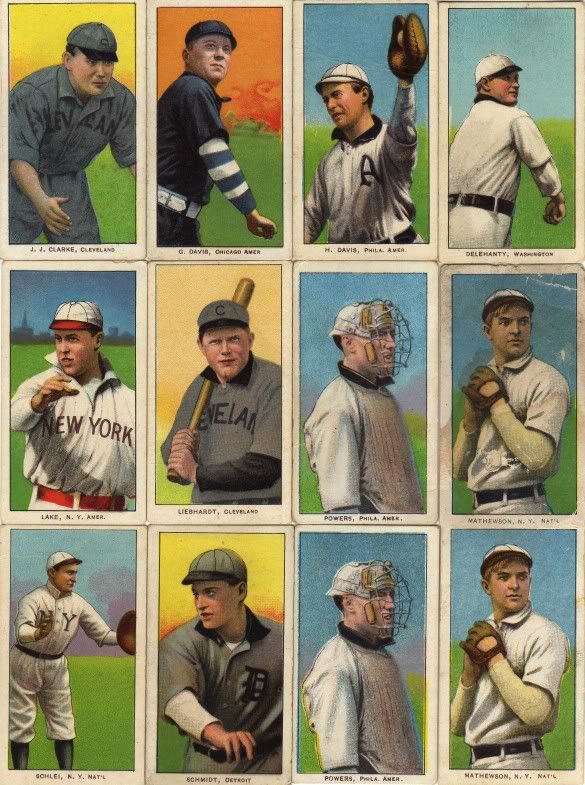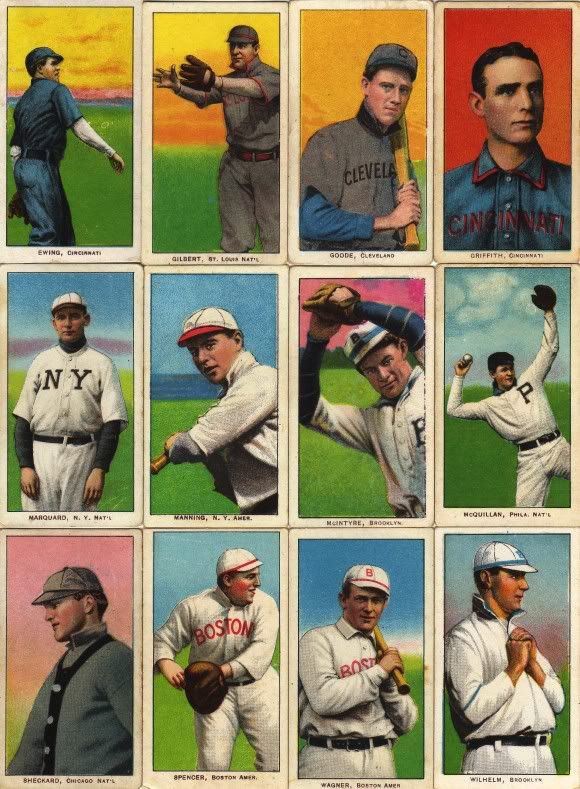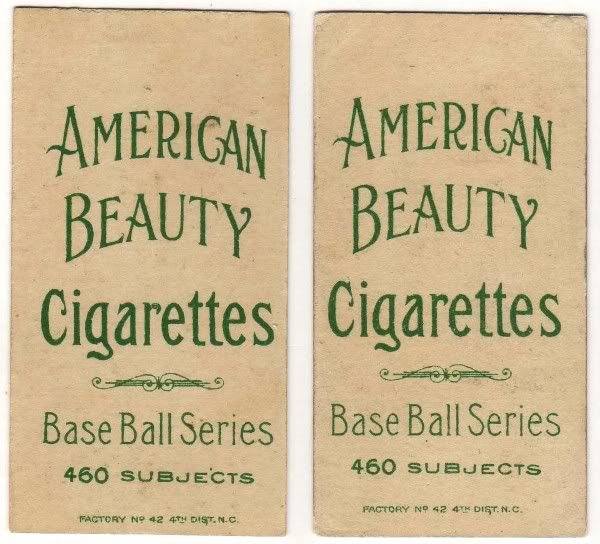Figuring out the sheet arrangement of how American Lithographic (ALC) printed the T206's is not rocket science, if you do the math. Evident is the factor "
6" in the make-up
of the various series.......
150 Series = 156 subjects
350 Series = 209 subjects
Super-Prints = 6 subjects
350/460 Series = 57 subjects (initially planned for 66 subjects)
460 Series = 46 subjects (+ two Double-Prints)
So. Lge Series = 48 subjects
Therefore, I contend that ALC formatted 12 cards across their sheet. I say this because research has shown that a 19" wide printing press was used by ALC to print T206's
and T205's. Therefore, a 19" wide sheet of cardboard includes 12 T206 size cards across the sheet. Depending on series configurations, sheets comprising of 36, 48, 60, 72
cards (and perhaps higher multiples of 12) were printed.
As will be illustrated in the next posts in this thread (GOUDEY, BOWMAN & TOPPS), the printing machinery dictates the the sheet configurations. Therefore, if the number of
subjects are less than the number of cards that a complete sheet will accomodate....the standard printing practice is to include Double-Prints (D-P) to fill out that sheet.
Having access to a large T206 survey (15,000+ cards) for quite a number of years, the numbers in this survey suggest to me that the following subjects (with respect their
series) must have been D-P.
150 Series ...... simulated sheet of 36 cards including 34 subjects of which Powers and Matty (white cap) were D-P



.................................................. .................................................. .................................................. .............................
Powers ..................
Matty
350 Series
Six Super Prints......thanks to Scot Reader's great research as documented in his book titled "Inside T206".
Furthermore, these 6 subjects were extended into the
460 Series and were D-P on certain sheets.
 460 Series
460 Series
Mgr. Duffy and Russ Ford were Double-Printed to fill out a 48-card sheet that includes the 46 subjects in the 460-Only series.


The 10 subjects noted here that appear to have been Double-Printed (as indicated by their numbers in large T206 surveys) are just a start. Most likely there are more D-P.
Your inputs on this subject matter are appreciated.
TED Z